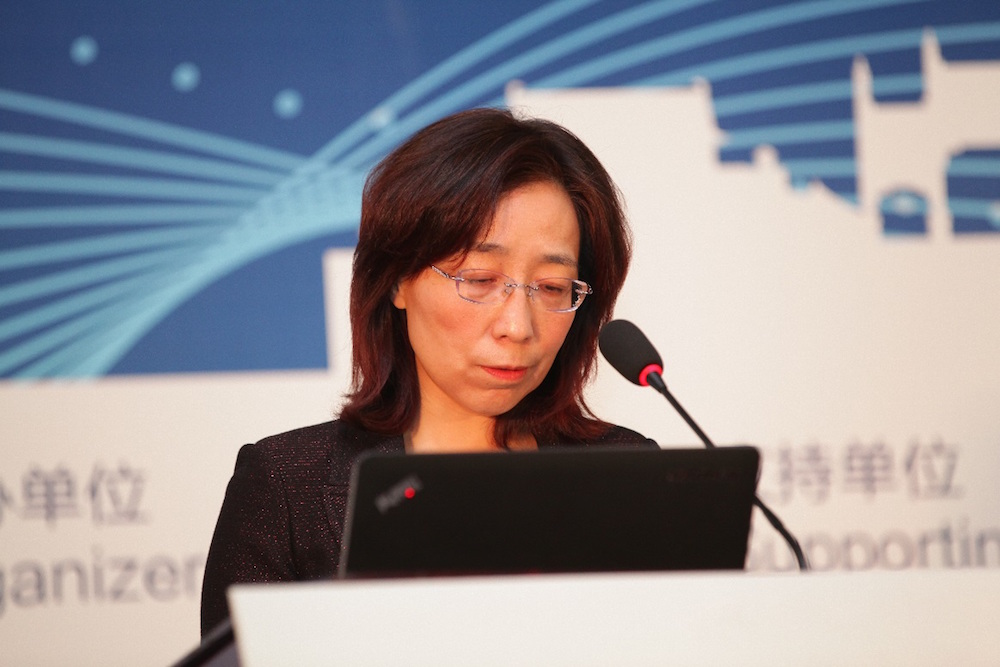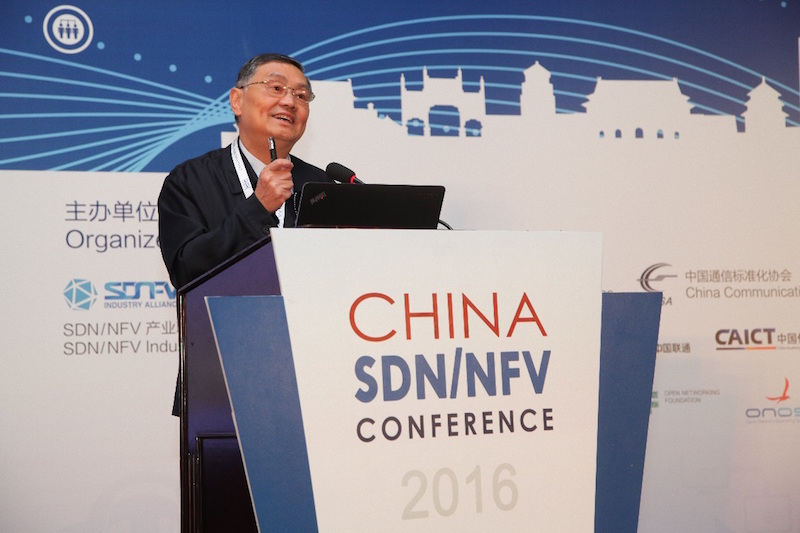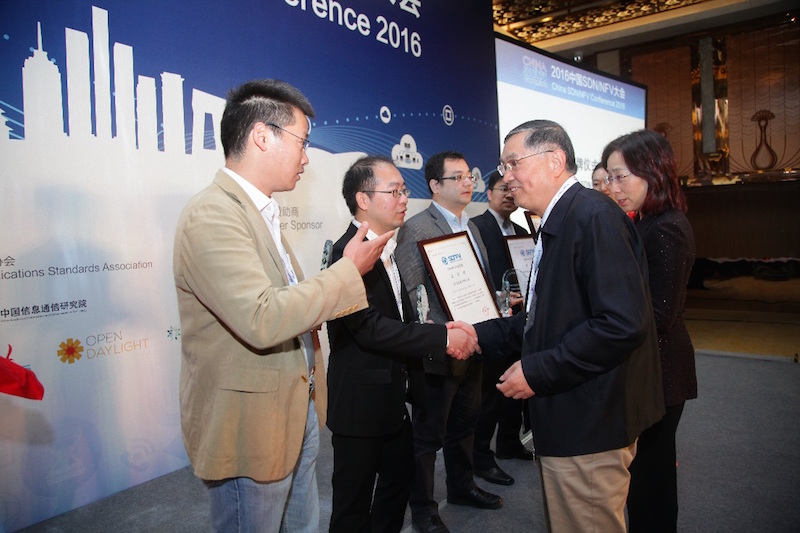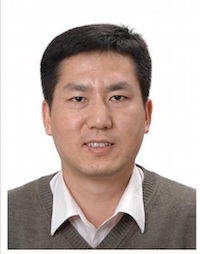The China SDN/NFV Conference 2016 was held in Beijing on April 12-13. The two-day conference, co-sponsored by the SDN/NFV Industry Alliance and the China Communications Standards Association, discussed the latest developments in the field of software-defined networking and network functions virtualization (SDN/NFV), focusing on the hot issues concerning the industry. Recent developments in SDN/NFV were shared by carriers, device vendors, Internet companies, and international standards and open source organizations, and the problems and challenges facing SDN/NFV technology in practice were analyzed in all aspects and from different perspectives.
Many technical experts and representatives from well-known industry organizations were invited to speak at this year’s conference, including Guru Parulkar, the Executive Director of ONOS; Neela Jacques, Executive Director of OpenDaylight; Rick Bauer, Director of Technical Programs at the ONF; Heather Kirksey, Executive Director of OPNFV; and Ng Hwee Ming, Principal Technologist at Red Hat Asia Pacific; as well as experts from more than 20 organizations including MEF, The Linux Foundation, AT&T, Ericsson, Huawei, Intel, Telefónica, China Mobile, China Telecom, China Unicom, Alibaba, ZTE, H3C, Hewlett Packard Enterprise, and CertusNet.
The first day of the conference was hosted by Wang Zhiqin, Secretary General of the SDN/NFV Industry Alliance and Director of the Research Institute of Technology and Standards at CAICT, and the conference was opened with congratulatory remarks by Chen Jiachun, Deputy Director of Communication Development at the MIIT.

Deputy Director Chen gave four suggestions with regards to the future development of SDN and NFV:
-
to take advantage of this opportunity to rebuild network architecture and create a new-generation network infrastructure;
-
to make the most of this chance to adjust and reconstruct the industry setup and create autonomous, open network chips and operating systems;
-
to make use of this new technological revolution to surpass planned deployments, increase investment, make breakthroughs in key technologies, and give full play to the industry alliance;
-
to keep in touch with the worldwide trend toward integration and broaden and develop cooperation, support the creation of open-source SDN/NFV applications, actively encourage the participation of alliance members, and work towards a sharing community.

Mr. Wei stated that the main problems faced by current SDN development are the lack of mature technology and the question of how existing networks can evolve into SDN networks. NFV faces both these issues as well as a lack of relevant knowledge and experience. Mr. Wei gave four recommendations for future SDN/NFV development: first, that an advantageous strategy must be chosen to deepen transformation; second, that tactics must be practical, with actions more important than words; third, that breakthroughs must be made in thought processes, and that people must dare to make breakthroughs; and fourth, that collaborative development is required in the industry to avoid fragmentation. Finally, Mr. Wei said that SDN/NFV development must actively accept other innovative technologies, and LSO and Docker are two major topics that need our attention. The evolution to future network management systems will be from vertically integrated, horizontally interworking networks to vertically isolated, horizontally coordinated networks. The evolution of virtualization systems will be from traditional virtualization based on virtual machines to light virtualization based on containers.
Cao Jiguang, Director of the Technical Experts Committee at the SDN/NFV Industry Alliance, introduced the “White Paper on NFV Industry Development”, which was written jointly by various members of the Alliance. The white paper will soon be published on the Alliance website and free to download. Ma Junfeng, Deputy Secretary General of the Alliance, gave a report on the contents of the “Evaluation Report of SDN Solution for Data Center” document, which is about test results of the data center SDN solution created by the Alliance in concert with China’s three major telecom companies. Afterwards, Chen Jiachun and Wei Leping presented certifications to the vendors that took part in the test. In addition, Ma Junfeng and Rick Bauer presented FiberHome with its ONF OpenFlow 1.3 certification; the company had just recently passed the certification in the Taier Laboratory at CAICT.

CAICT and the ONOS completed a signing ceremony for an agreement on SDN certification training, with both parties sharing opinions on how to continue the development of SDN certification education. This was another step forward for the training of SDN technical professionals in China.
Experts from Huawei, Intel, and ZTE all gave insightful speeches on their researches and practices in the SDN/NFV field. Ng Hwee Ming gave a speech on “Open Source NFV”; Rick Bauer gave a speech on “To Act and Not Lay Claim: The Ancient Wisdom of Open Source and Collective Effort”; Guru Parulkar, presented “CORD: Central Office Re-architected as a Datacenter”; Neela Jacques, gave a speech on “The State of SDN & NFV: 5 Years In”; Heather Kirksey gave a speech on “OPNFV: Open Source Meets NFV”; Nan Chen, President of the MEF, presented “MEF: Leading the Evolution to Third Networks Services”.
In the afternoon of April 12, 2016, three breakout sessions were organized on “Migration & Implementation”, “Architecture – Orchestration”, and “SDN Technologies for Carrier”, during which technical experts from the industries made their points on key technologies in the SDN/NFV field and future trends.
Experts from the China Unicom Research Institute, Intel, Huawei, OpenStack, and Red Hat held a panel discussion on creating next-generation data centers and cloud services using SDN and NFV, bringing a close to the first day’s events.
The theme of the conference’s second day was “How SDN and NFV Are Reshaping the Telecom Network, Services & Business.” Experts from carriers worldwide spoke on the current status of carrier SDN/NFV deployment as well as related problems and considerations.



